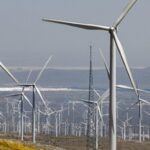Posts tagged with 'energy efficiency'
Achieving transformation in today’s cities requires the active and ongoing participation of many stakeholders, from the public sector, to civil society, private companies and academia. Non-government organizations can play a crucial role due to their commitment to improving the quality ...

City officials tasked with reducing and eliminating greenhouse gas emissions from their communities face a tricky task in estimating building emissions as they work to prevent the most harmful impacts of climate change. The biggest challenge is that there isn’t consensus ...

As the world moves towards a green energy transition, effective, equitable and efficient energy governance is crucial to ensure the energy needs of the most vulnerable populations are met and nobody is left behind. This transition, and the future success ...

To date, over 90 countries have set net-zero emissions targets, committing to help prevent the most harmful impacts from climate change. But questions remain around the credibility of many of these pledges and whether these goals will be met. Together, countries with net-zero targets — which ...

Over the past 10 years, large energy buyers including corporations and cities have taken major strides to reduce energy-related greenhouse gas emissions by setting 100% renewable energy targets and then purchasing renewable electricity to demonstrate progress on an annual basis. ...

We now have less than seven years to cut emissions in half in order to keep global warming below 1.5 degrees C, the limit scientists say is necessary for averting some of the most dangerous climate impacts. 2022 saw flooding, drought and severe ...

More than 20 million students in the United States ride school buses every year. This equals approximately 7 billion trips per year, making school buses one of the most widely used forms of public transport in the United States. But those trips aren’t always ...

The latest findings from the IPCC paint a grim picture: Despite some signs of progress, the world’s chance of holding global warming to 1.5 degrees C (2.7 degrees F) is shrinking — and with it, our ability to prevent the most dangerous ...

With every fraction of a degree of global warming, climate change impacts will intensify. In the latest installment of the Intergovernmental Panel on Climate Change’s (IPCC) Sixth Assessment Report, 278 scientists from 65 countries find that the world should peak GHG ...

India is an emerging economy at the cusp of sizeable growth: over the next three decades, its gross domestic product (GDP) is expected to triple and the population is expected to increase by another 200 million people. As a result, the country is poised ...

China is experiencing the largest city-ward movement of people in human history. 700 million people have moved to the nation’s cities since the beginning of economic reforms in 1978. In that same time, the urbanization rate rose from less than a fifth to close ...

As COP26 is in full swing in Glasgow, countries worldwide have failed to reduce emissions in line with the Paris Agreement targets to limit global warming to 1.5°C. But cities are a bright spot. Many have developed climate action plans ...

Reducing carbon emissions in buildings will be critical to achieving the Paris climate goals and achieving net zero emissions by 2050. Buildings represent 39% of global greenhouse gas emissions, including 28% in operational emissions and 11% in building materials and construction. Global building floorspace ...

To avoid the worst impacts of climate change and realize the goals of the Paris Agreement, greenhouse gas emissions should fall to net zero by mid-century and then reach net negative emissions thereafter. Responding to the science, 60 countries, as ...

The allure of electric vehicles (EVs) has never been stronger. EVs have zero tailpipe emissions, offer lower operating costs than conventional gasoline-powered vehicles and now come in a range of sleek models. With the tailwind of private sector initiatives such ...


























